I have followed the war in Ukraine closely since 2022, and now that the war seems to be heading toward a conclusion, I would like to offer some observations.
The War Was Planned and Guided by Western Governments
Recent revelations have ended the pretense that Ukraine has been directing its war against Russia independently with only financial and logistical assistance from the U.S. and NATO. In February and March of this year, the New York Times published two articles confirming what had been widely claimed by critics of U.S. involvement in the Ukraine war: that the U.S. played an extensive role in laying the groundwork for military action against Russia and was actively directing the resulting war. The NYT reported that the U.S. established CIA bases in Ukraine years before the Russian invasion and that the war was being directed to a great extent by U.S. military personnel in Germany.
These revelations provided clear evidence that the U.S. and NATO nations were fighting a proxy war against Russia, and not simply lending material assistance to Ukraine. Secretary of State Rubio made this official in an interview statement on March 5, 2025.
Rubio observes Lent and acknowledges U.S. proxy war in Ukraine
Western Mass Media Outlets Are Losing Credibility
The emergence of extensive independent Internet media coverage of the war has undermined the credibility of legacy mass media. The vast amount of video and map data coming from the Ukraine battlefield permits daily observation of shifting positions and battle lines. The fog of war has been lifted to a considerable degree by the indirect confirmation of troop positions by geolocated strikes on those positions. Thus, the belligerents are often undoing their own propaganda when they circulate videos of their attacks on enemy forces.
In general, Ukraine war coverage from independent Internet sources has been days or even weeks ahead of the trends reported in mass media outlets. A good example of such close coverage is the Military Summary Channel. Although “Dima,” the proprietor of the channel, over-editorializes his commentary, his twice-daily reports of battlefield movements are based on multiple information sources weighted by reliability and are usually correct. There is no equivalent coverage from legacy media. Instead, Western mass media continue to spin narratives favorable to Ukraine based on amplified positive events while ignoring or tardily reporting negative battlefield developments.
Representative Military Summary Channel battlefield daily status map
For example, on June 3, 2025, The New York Times published a front page article describing a successful drone attack on Russian airbases as a demonstration of Ukraine’s ability to innovate strategically and offset Russia’s material advantages in the war. There was no mention of the steady crumbling of Ukraine’s defenses in Donbas or Sumy. Thus, the “newspaper of record” created an illusion of Ukraine holding its own while objective information from the battlefield indicated a seriously deteriorating situation.
Unfortunately, public opinion is still heavily influenced by mainstream media outlets that effectively operate as elements of the U.S. military-industrial-complex. Most of these establishment publishers and broadcasters have supported every disastrous U.S. war since 9/11. Although their credibility is weakening, the grip of the major media corporations on public opinion remains strong enough to enable ruinous military adventures.
Ukraine Will Lose the War
The fundamental mismatch between the military potential of Ukraine and Russia was evident at the outset of the war, but this was dismissed by U.S. policy makers because of ideological blindness. It was assumed that Ukraine, aided and supplied by NATO, would prevail against an incompetent and inefficient Russian military.
Apart from the numerical disparity in military strength, national history also weighed against fighting this war. The historic pattern of Russia’s large wars has been that of a stumbling start, then a steady, grinding advance to (often ugly) victory. From Borodino in 1812, to Stalingrad in 1943, to Chechnya in 2000, to Georgia in 2008, whenever Russia has fully committed to a war, it has prevailed. Nevertheless, with a complete disregard for military facts and history, the Washington neocons decided to roll the dice on Ukraine.
After initial reverses in the first years of the Ukraine war, the Russians began adapting rapidly, deploying more troops, revising their tactics, and introducing new weaponry. An ambitious Ukrainian offensive in 2023, spearheaded by Western weapons, failed completely. Beginning with the fall of Avdiivka in February 2024, Russia has steadily gained ground, and Ukraine has faltered. The only Ukrainian offensive of recent note, a push into Kursk in August 2024, was defeated and reversed after several months of fighting that inflicted large material and manpower losses on Ukraine.
Western resources, once flowing abundantly into Ukraine, are now dwindling, leaving Ukraine short of weapons and munitions. Ukraine is increasingly reliant on drones to slow Russian advances, but drones cannot substitute completely for artillery, aircraft, or armored vehicles, all of which are in diminishing supply. Meanwhile, Russia’s large and growing military industrial base is providing a steady flow of weaponry to its forces in Ukraine. The Russian strategy of stretching Ukraine’s insufficient manpower over a long front, coupled with devastating attacks at weak points, is steadily breaking down the defensive lines. Barring direct intervention of NATO forces, Ukraine can only delay defeat while incurring ruinous losses.
Although there is some chance that negotiations will end the war in the near future, the outlook for Ukraine is bleak. Peace terms would not leave prewar Ukraine intact, likely ceding at least Crimea, Donetsk, and Luchansk regions to Russia. Continuation of the war will result in an even more unfavorable outcome, possibly making Ukraine a dysfunctional rump state bereft of its most productive lands and facing costly and uncertain reconstruction.
There Have Been Significant Developments in Conventional Warfare
The Ukraine war has been a testing ground for military technology, and the results will have consequences for future armed conflicts. Tanks and aircraft, formerly considered the dominant weapons in conventional war are being challenged effectively by precision guided missiles and drones. This suggests that asymmetric warfare will become more difficult for nations relying on the superiority of large arsenals of older weapons. Insurgents and small nations will increasingly arm themselves with relatively inexpensive precison-guided weaponry to counter the military capabilities of major powers.
Drones have quickly become a prominent player on the Ukraine battlefield, providing reconnaissance and strike capabilities at a far lower cost than aircraft systems and at low risk to pilots. Basic drones are remotely operated and guided by radio links. These links can be jammed, but the jamming equipment has to be operating on the right frequencies, at the right place, and the right time, so it can’t always stop a drone. The latest drones communicate over a long fiber optic cable, so their signals are immune to jamming. Drones can be launched from almost anywhere, so they are a remarkably versatile weapon, as demonstrated in the recent attack on Russian airbases. With the declining numbers of Ukraine’s artillery and armored vehicles, drones have become the main weapon retarding the advance of Russian forces because large-scale assaults are hazardous in the presence of numerous attack drones. The Ukrainians have also used naval drones that have sunk a few Russian ships in the Black Sea and caused the shifting of Russian naval forces away from Crimea.
Fiber optic guided drone – deadly accurate and jam-proof
Hypersonic missiles have been employed for the first time in large-scale warfare. Russian has used three types of hypersonic missiles in the Ukraine war. Becasuse of their great speed, these missiles are difficult to intercept, even for the Patriot system, and they have tremendous destructive power because of their ability to destroy deeply buried targets, such as command bunkers or equipment storage sites. The Oreshnik missile delivers non-explosive kinetic energy warheads of novel design and reportedly destroyed an extensive underground factory facility. NATO has no conventional missiles with equivalent capabilities.
Glide bombs are relatively simple but highly effective weapons that have made a big contribution to Russia’s increasing success on the battlefield in Ukraine. By attaching folding wings and a guidance system to ordinary aerial bombs Russia has made its enormous inventory of Cold War era bombs convertible to precision munitions. When launched from high altitude, the 50-90 Km range of glide bombs allows their carrier aircraft to stay outside the range of Ukrainian air defenses. These bombs have made it very difficult for Ukraine to hold defensive positions, since the larger glide bombs are capable of destroying even the most formidable fortifications. Although the U.S. has supplied equivalent guided bombs to Ukraine, there are too few Ukrainian attack aircraft left to deliver these bombs in quantity. Russia is dropping about 100 glide bombs daily on Ukrainian positions.
What Comes Next
U.S. foreign policy makers will not learn to avoid another debacle like Ukraine. On the contrary, their ability to walk away from the ruins of Ukraine without any political repercussions will reinforce their belief that they have a repeatable formula for sustaining a bloated military, selling weapons, and starting wars of convenience. This pattern of U.S. foreign policy failures stretches from Vietnam to the present day, with a corresponding trail of death and destruction.
I expect another iteration of this cyclic pattern in a proxy or direct U.S. war against China in the Pacific. Substitute the Taiwan independence red line for the Ukraine in NATO red line, and you have a new casus belli scenario to sell to the public: an evil authoritarian regime in China invading the plucky small democratic nation of Taiwan. Whenever increasing the U.S. defense budget is in doubt, a confrontation in the South China Sea or sending more troops to Taiwan can be arranged to bring China closer to the brink of war. The pernicious cycle of military overreach will likely continue until the U.S. is either exhausted financially or decisively defeated militarily. Meanwhile, thanks to Internet media, the whole world will watch the march of folly.
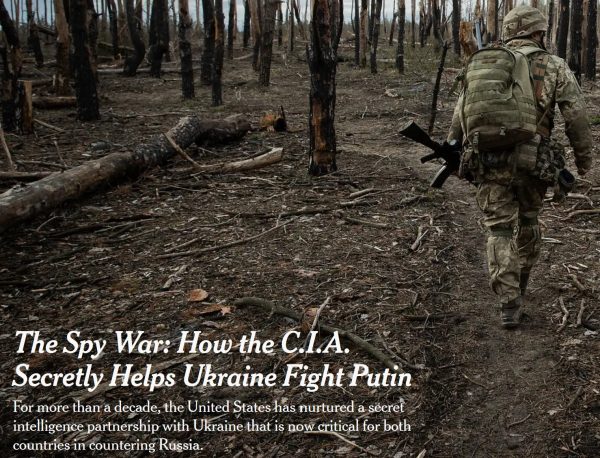


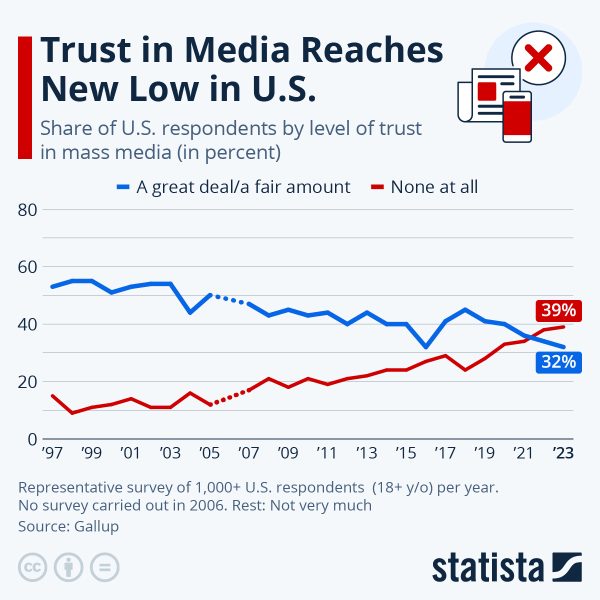
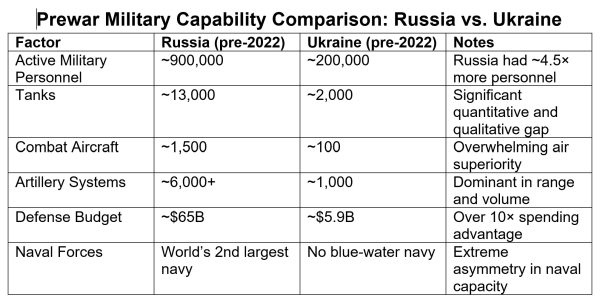

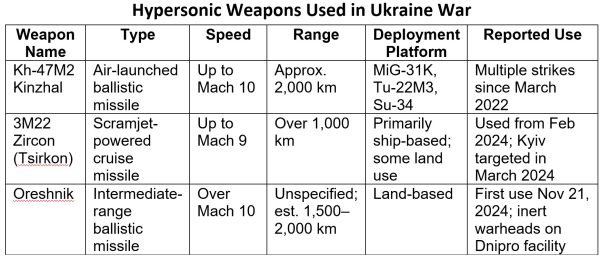
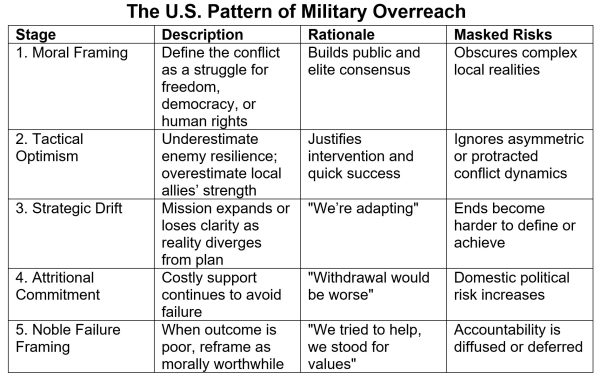


Regarding drones, it is interesting that they were used to good effect right from the start of the conflict (at least by the Ukrainians), but that neither the Russians nor the Ukrainians were the innovators in that matter: drones had already made a decisive, widely noticed impact during the second Nagorno-Karabakh war (2020) and during the Tigray war (2020-2022). Military historians will have plenty of material to trace the genealogy and evolution of tactics across the conflicts from 2020 onwards.
If I understand correctly, ISIS was the first group to use drones as weapons on a battlefield.
It’s quite complicated as ragtag groups were experimenting with nascent uses of modern tech like this. This includes the groups mentioned but also Ukraine post-2014, the Syrian Arab Army, and others.
Nothing like the degree of sophistication and scale of the SMO, however, and not against the full panoply of a modern nation-state military. I think Haig’s point is unchallenged. We haven’t seen a reevaluation like what’s coming in generations. SMO developments will likely overturn more doctrine than any previous war since WW2.
Nope. It was CIA, on November 3, 2002. That was three and a half years before ISIS was declared. ISIS did use them regularly against the Russian air base in Kheimim, but for no real effect – which may be why Russia did not take drones that seriously early in the SMO.
An interesting fact to have at your fingertips!
Yes, I worked in Iraq in 2004/05 (IT support). Drone use for both military and Intel purposes were well established there at that time.
Could you be more specific? What is Intel’s role there?
MQ-1 Predator drone firing Hellfire missiles in Afghanistan – targeting Al-Qaeda and Taliban forces – was the first use of drone in combat. This actually occurred October 7, 2001, and was orchestrated by the CIA. It was technically considered a successful operation, but a strategic failure in that the intended target, Bin Laden, escaped.
People have been using remotely controlled planes packed with bombs for war a long time–the earliest example, I think, was during World War I. Once small model planes could be used to carry bombs and be remotely controlled with any kind of precision (and got cheap enough), it would have been used to carry bombs as soon as feasible, especially if you don’t have access to expensive missiles….
I remember back in the eighties the army was developing a drone (called “Aquila” I think). I believe the project got gold-plated to death.
Small drones were used already in the original Donbass war.
And the Karabakh war featured Turkish Bayraktars, i.e. large drones carrying small missiles.
These were all shot down out of the sky in the first couple weeks of the SMO.
Which is precisely why Russia never invested much in them — the thinking was that they are expensive but slow and would not survive against modern air defense. Which has been vindicated — you barely see them to this day, and now exclusively on the Russian side and only where Ukrainian air defense has been suffficiently degraded.
The real revolution is cheap mass produced kamikaze drones and drones that drop stuff on the enemy. Which was ironically first done by DNR forces way back in the days, then Ukrainians copied it, but the Russian army largely ignored the lesson, until it was forced to learn it in 2022
thanks Haig, well said. I’m sure nothing will be learned from this catastrophe, and the US will move on to its next big catastrophe, the creation of a number of vary expensive fish reefs around Taiwan. The interesting question to be will be, what will be China’s terms for peace after that war loss? Demilitarizing US forces in the Pacific? Dropping all tariffs? Neutering the US into nothing more than a soybean plantation to feed China?
The US will presumably have the same lack of defense against non-nuclear hypersonics that obtains in the the UKR Russo war. So the US mainland may not be unscathed in this one.
It’s not a catastrophe, it’s a washing machine. Tens of billions of dollars goes into the war where it gets recirculated and washed clean and comes out the other end into the bank accounts of connected people. Your tax dollars at work. It’s what happened in Vietnam and was definite the model in Afghanistan but when it was shut down there, the washing machine moved to the Ukraine. I guess that when the Ukraine collapses the washing machine will be moved elsewhere. Maybe Taiwan? Sure in each case there are hundreds of thousands of people that get killed but who hears their protests?
The oceans give us decent isolation. We have the best subs in the world. A foreign country would be hard pressed to get close enough with ships or airplanes to launch these missiles at the US.
A more likely outcome is that China will cut us off so, we’ll slowly de-civilize as our electronics fail and there will be no replacements forthcoming. China controls the supply chains for just about everything including rare earth and magnets we need to build our weapons and maintain our civilization.
Eventually we could claw our way back but it’ll be decades before we can rebuild our supply chains and industry.
We also have millions of containers coming in through our ports daily. Maybe hypersonics and associated equipment won’t fit inside them (am I sure? no.) but a lot of stuff thst could cause mayhem can.
One nuclear-armed Poseidon torpedo could decimate a coastal city. Russia wants 30 of them
https://thebulletin.org/2023/06/one-nuclear-armed-poseidon-torpedo-could-decimate-a-coastal-city-russia-wants-30-of-them/
That claim does not age well, and neither do those subs. Russians are making brand-new state-of-the-art boats as we speak (and arming them with hypersonic missiles, and nuclear powered torpedoes). USA, not so much.
Amen to that and good riddance to the USA death star…
“I have followed the war in Ukraine closely since 2022, and now that the war seems to be heading toward a conclusion…”
Haig, I enjoy your posts and I’m going to finish reading, but this mess is like Covid.
NY Times doesn’t mention that the Russia bombers were openly stored sitting ducks because of Russia’s New START nuclear arms control treaty with the United States which requires transparency for nuclear-capable bombers. Nice job, Ukraine, and apparently the United States. Attacking Russia’s nuclear deterrence taking advantage of an arms control treaty, what could go wrong?
Crazy, even this more detailed article quoting nuclear policy experts doesn’t mention it. https://www.nytimes.com/2025/06/03/world/europe/russia-ukraine-drone-attack-putin-war.html
These attacks come from magical thinking in which desired political outcomes are produced by actions that have no logical connection to the the goal. Destroying a few Russian aircraft will in no way cause Russia to accede to Ukrainian demands. This will simply strengthen Russian resolve to fight to the finish. The Kursk offensive was another example of an action that military experts considered a foolish fantasy from the outset to its inevitable failure, yet the Western media depicted it as “leverage” against Russia. The street expression for describing such behavior is: Play stupid games, win stupid prizes.
Ok, Russia suspended compliance with the treaty in 2023 but they continued open storage. Regardless, attacking Russia’s nuclear deterrent is stupid and neither NY Times article explores the dangers of this.
Thank you HH for the excellent article and response.
Excellent as usual. The last point is absolutely critical to grasp and very bad news for us all.
I’d caveat by saying it looks to me like the only conclusion that’s close is a pyrrhic victory for Russia. A decisive conclusion that addresses Putin’s initial 21-22 issues seems years away if it’s achievable at all.
This only amplifies your conclusion for me: a long, bumpy, and unhappy ride lies ahead.
I stopped paying any attention to the MSM, the legacy media, print TV, digital years ago and not just their “war” reporting but the relentless pushing of the agenda of the day, the week, the month. I applied the old this is s— and this is shinola test. it boggles the mind that purportedly intelligent aware people still believe this stuff.
I’ve developed the perspective over the last few decades that there is no level of intelligence or education that can protect you from self delusion or stupidity.
You may be totally coherent and comprehensive in analysis and understanding of many issues but some issues you just can’t understand or accept a perspective that challenges your entrenched view.
I think it comes down to the pernicious nature of cognitive bias. Whether it’s ego or need to belong to the desirable social group, or some other psychological quirk people seem to entrench themselves in their existing viewpoint rather than accept that they might be wrong about something. Queue the Fonzi Happy Days video
https://youtu.be/qPMIdIGj8v0
US direction and participation in/of Kiev’s war was obvious last summer when the $60 odd billion US aid bill for Kiev included $20 billion for USEUCOM direct support. Probably pays for USSPACEFOR satcom for attacks on RF.
Unlike Vietnam the pentagon does not have to take money out of other pots for Kiev. Then there is “black money” paying to tempt nuclear war.
As to Taiwan, PRC and RF could align with DPRK for a proxy assist.
The NRO has started suspending and cutting Ukraine access to commercial imagery and the NGA is cutting them off from the GEGD system. This is a start.
Everything is being thrown in at the moment to get Russia to take its eye off the main prize, the re-enforcement and movement of their land armies in Ukraine. Never forget that Ukraine has the total logistics support of the whole of Europe.
Very useful and concise as a reference to forward to others. Thank you.
This entire thing depended on the collapse of Russia. As Hitler said: “If you kick the door in, the whole house will fall.”
I don’t believe there has ever been such a gross miscalculation in history, except for perhaps Hitler.
We have billionaires, Wall Street ‘Masters of the Universe,’ neocons, money managers, and financial experts at the Fed, and they were all dead wrong.
What use are these people, if they don’t understand in their wildest dreams how an economy works?
And they want to take on China? Utter failure but on to the next utter failure?
Actually, they were right. We’ve paid them handsomely for their “wild dreams”. And they don’t want to take China, they want to spend (our) money on losing to China. My only hope is that they run out of countries because I think they’re so good at duping Americans, they won’t run out of (our) money.
Heh, a great example of something the West would never implement, because there isn’t enough graft for the armaments industry.
“Glide bombs” were first used by the U.S. during the Vietnam War.
Interesting. I think the real innovation is the ‘planning and correction module’ that uses GPS or whatever to precisely control the wings and hit a target.
The real inovation is making it in large numbers in a cost effective manner. It’s not about (re)inventing the wheel, but making it work properly on a large scale.
It uses GLONASS. Kometa reciever is getting constant upgrades, in order to improve resistance to EW. On these old photos there is a 4 element antenna array (those squares around KOMETA).
https://militarnyi.com/en/news/russians-use-bombs-equipped-with-ew-countermeasures-system/
I have seen photos of newer ones with 12 (3×4), and latest with 16 arranged it two concentric circles.
Glide bombs were first used in WWII.
https://en.wikipedia.org/wiki/Fritz_X
Try WWI…https://engines.egr.uh.edu/episode/1583
Regarding hypersonic weapons as deep penetrators: In his discussions of Oreshnik, Ted Postol asserted that Oreshnik was not capable of deep penetration, owing to the projectile airspeed being greater than the speed of sound within the projectile. The result of this being that much of the projectile vaporizes on impact, the effect being akin to a contact-fused high explosive warhead. As I recall he felt that images from the target zone bore out this analysis.
Armor-piercing fin-stabilized discarding sabot rounds travel at 4-5 times the speed of sound and they don’t vaporize on impact but can penetrate 1.5-2 times their own length of hardened steel, depleted uranium and ceramic plates and still have enough high temperature, high velocity mass left to destroy a tank.
What material is the penetrator? I believe Postol used iron as his reference.
In any case would 2 times the projectile length count as “deep penetration” in this context?
The most effective penetrators are made of tungsten or depleted uranium, and the Russian have mentioned completely new materials regarding the Oreshnik.
The 2 times the length penetration is against materials that have been carefully crafted by researchers to resist penetration as much as possible. Against, say, enforced concrete and soil it would be much, much more.
And to Grebo below, the most modern tungsten penetrators are made of shorter block inside of a softer (steel?) sleeve, so that the initial shock is attenuated when it travels the length of the penetrator. The whole point (pun intented) of the terminal ballistics in tank penetrators is to keep the point under an enormous pressure so that the target material liquefies and actually turns to plasma on the contact point. That plasma is ejected out and thus a penetration channel forms. It does consume the penetrator too (thus long rods), but at a slower rate.
AFAIK, the main reason the APFSDS shots travel only at 4-5 times the speed of sound is that they haven’t found a material that doesn’t start to melt due to the air friction while travelling 3 kilometers trough low atmosphere at higher velocities. Which is why the trend for several decades has been to lengthen the rod.
I think your last paragraph comes close to making my point for me.
Three kilometers of sea level atmosphere equals how many meters of dirt? Bear in mind that the problem arises due to internal energy transfer via shockwaves, so the relative densities of the projectile and the medium it’s passing through matter a lot.
Sabots may be faster than the speed of sound in air but Oreshniks are faster than the speed of sound in Oreshniks, which is 10 times faster than in air.
Presumably Postol thinks that the energy of impact will pile up at the pointy end, rather than travelling back up the warhead, resulting in its dissolution.
Maybe so, but wouldn’t the Russians have noticed that in testing? Wouldn’t the Ukrainians be gloating about the useless wunderwaffen? Maybe it is the target that gets vaporised.
Sabots are the things discarded, and flying off to the sides the moment they leave the barrel. I had problem understanding the rest of the sentence, so I won’t comment on that.
When the projectile strikes the ground shock waves begin to propagate back up the length of the projectile, but the projectile is coming down even faster. The pressures generated are, per Postol, sufficient to convert the fabric of the projectile to gas.
As I mentioned, Postol discussed images from the scene of the attack and felt they were consistent with the projectiles exploding at shallow depth.
Whatever else is true, Oreshnik is still a means of striking which Ukraine and NATO cannot defend against, perhaps the Ukrainians prefer to keep mum about that?
People are focusing too much on the Oreshnik impactors from that strike in November.
To me the Oreshnik is much more relevant as a likely resurrection of certain 1980s Soviet MRBM concepts for a swift disarming strike on targets in Europe, but now heavily upgraded with 6×6 MIRV (potentially, it is not clear what exactly the configuration is in terms of propeties, i.e. how many of these are independently targetable precisely).
Nuclear Oreshniks if the individual warheads separate very high and can be individually targeted to a wide area is something absolutely apocalyptic — 36 targets at a time, if that is indeed possible, would mean that with a couple dozen Oreshniks practically all of NATO in Europe is gone, in 15 minutes.
But nobody knows what the real capabilities are. A lot of speculation, baseless assumptions and scientifically absurd claims dominate the discourse.
P.S. Purely kinetic warheads are fundamentally limited by the laws of physics. How much energy is in each of those? Well, whatever was in the rocket fuel minus whatever was lost on the way to cross that distance and overcome air resistance. Laws of conservation and all. Yeah, it can be quite destructive at those speeds, but it is still a relatively small amount of energy, at best on the same order of magnitude as a conventional warhead. You can’t do much with that other than pinpoint strikes at small objects.
So in order for it to be truly destructive, it would have to either:
1) Initiate some kind of reaction within the impacted object that will release additional energy (there were such claims), with how much that energy is depending on the nature of the reaction
2) Actually be nuclear
But what we saw in Yuzhmash was not some spectacular mushroom clouds emanating from the ground, so if it was 1), it was still fairly limited.
Thus with respect to the immediate goal of a preemptive strike on NATO, it would have to be nuclear Oreshniks. There is no other way. The targets are too many and too large (airfields, military bases, ports, whole cities even) and only substantial nuclear explosions can take them out properly.
Lol, I was hoping someone might jump in and make my eventual point for me. Honored to have it be you.
I’m pretty sure my stepfather described Ted Postol’s Oreshnik trick to me back in the seventies. He was discussing the relative merits of the Pershing II missile and the counterpoised Soviet weapon, which employed three warheads. He felt the Soviet approach meant their system could readily be upgraded in a way that would make any forseeable NATO missile defenses useless against it. At the time he was working on missile defense for Burroughs.
So yeah, in my opinion the real significance of Oreshnik is to be found in the observation that it does not seem to be particularly bleeding-edge technology, and the question “What if those were nukes?”
Yeah, thus my continued suggestion that whatever “serious” response Russia has towards Europe, if they ever launch one, would have to be nuclear. Still wasn’t sure about technical limitations of Oreshnik, which has too many obvious myths surrounding it, but if it is, as my hunch suggests, much more limited in the grand scheme of things, then the talk about them, by themselves, being a real game changer without going nuke is overblown….
Regardless of the unknown impact/destructive scale vis a vis nuclear, the game changing momentum of Oreshnik is the very fact it not being nuclear and thus not operating with the literal and political fallout of nukes.
If these weapons – current Russian hypersonics – are able to penetrate any bunker, then that too is a message regarding the psychology of each political animal in the West considering safety from accountability for crimes committed against mankind.
If conventional destructive force can wipe out entire armies in the phase of preparing for attacks e.g. that upsets the entire idea of MAD (in a positive way possibly?).
Nukes are considered unsable for a reason. A problem Oreshniks don´t have. The idea behind the PR-term of surgical strike or the super-fuze to reduce CEP might have met its true heir with the Oreshnik-“family” of weapon systems. WWIII without the apocalypse is a serious military threat.
And forgive me for potentially exaggerating. But I do believe there is cause for anybody hardly mentioning the Orehsnik and Co. with them having destroyed serious targets such as Yuzhmash or NATO bunkers.
The question being raised isn’t the system’s effects relative to nuclear weapons, it’s whether there’s reason to believe it’s at all useful for destroying underground bunkers.
So far as I can see the belief that a nonnuclear Oreshnik could hold NATO command and control under threat is based on the intuition that “faster equals deeper” – and nothing more. Postol has pointed out that this intuiton is likely invalid.
The Oreshnik attack may well best be viewed as a demonstration of nuclear capabilities using dummy warheads. If that’s the case then it’s had the unfortunate effect of convincing many of Russia’s supporters that Russia can go nuclear without going nuclear, when in fact the Russians were signaling their nuclear dominance.
These are good points. People are atttibuting almost mystical power to Oreshnik, but the science seems very murky…
Great summary of the war to date, and the history going back to Vietnam, but I have a more optimistic view going forward. As Haig points out, the media has lost considerable credibility, so much so, in fact, that Trump was elected president twice. The West is fractured while our ColdWar 2 opponents are united and have the new third world increasingly on their side — i.e. the side of raw materials, infrastructure, and cheap manufactured consumer goods.
Although it’s often observed that the US is a vetocracy, with no faction powerful enough to enforce coherent government policy, this does not seem to be true. The national security state can do whatever it wants. The extent of the ongoing defeat of national security interests may provide an opening for a new, more intelligent, faction.
One factor that accounts for NATO’s overconfidence that was not well covered in the excellent overview above, was the certainty that the extreme economic sanctions that followed Russia’s recognition of DPR and LPR would quickly crush the Russian economy, and let them ‘regime change’ Russia. I think the escalating provocations in late 2021 early 2022 were intended to draw a Russian response that would allow the real economic death blow to be delivered.
That plan failed because Russia had managed to become sufficiently independent, and friendly with China and India, to weather the financial siege. Had it gone down in 2017 as planned, the outcome might have been significantly different. I think they telegraphed that plan with the MH-17 sanctions.
The plan was WWI re-run, not WWII. It turns out, Russians learned their lessons, unlike ze Germans.
Before we get into a war with China, Israel may trip us up into one with Iran. And then there is the possibility of something closer to hand, like Venzuela, being the next target of convenience. It’s hard to believe these maniacs will give up on their fetish for endless war, even if “we” keep losing in the long run. There’s just too much money to be made by the well-connected in the meantime.
Thanks for this clear and brilliant summary, Haig.
Was it not Russia, not Ukraine, which attacked? Did the USA and the West make it impossible for Russia not to attack? And is it really so that Russia cannot just stop waging war and withdraw its troops from Ukraine?
Since 2014 there has been a civil war Ukraine. In the February 2022 Ukrainian armed forces started a heavy artillery barrage on cities and surroundings of Donetsk and Luhansk – where militias opposing the coup regime and upholding the Ukrainian constitution were in power – causing hundreds of thousands of civilians to escape to Russia.
Russia contacted immediately France and Germany (as the “Normandy contact group”) in order to de-escalate, but both denied anything happening regardless of the OSCE monitoring teams recording the events. Russia then recognized the two People’s Republics and in response USA and EU slapped “sanctions from hell” on Russia.
Only after five days of Ukrainian artillery barrage Russia invaded. So, you get to decide who attacked whom as it’s clear as mud.
No.
P,S. Are you the guy that got banned the other day?
The amount of forces that Russia could bring to bear at the start of the conflict was not 900 000.
A major reason to call it a special military operation and not a declaration of war was to insure that the drafted part of the army could not be used in the conflict. Even if the draftees would be put on logistics that would end at the border and enlisted would have to take care of the last leg of all supply runs.
Then from the enlisted part a significant amount were needed in Russia (and elsewhere, for example Syria) to keep the military functioning.
The end result was that Russia could use about 20% of its forces in Ukraine. Which is in agreement with the 20 000 to 40 000 used in the feint on Kiev, the 80 000 to 90 000 used in the blitzkrieg towards the Dnieper in Kherson (Note second time a blitzkrieg was successful against a near peer to peer since the initial use by Germany against France) , and the 50 000 to 60 000 used as reserves. It also fit with the 150 000 to 200 000 numbers thrown around in the west.